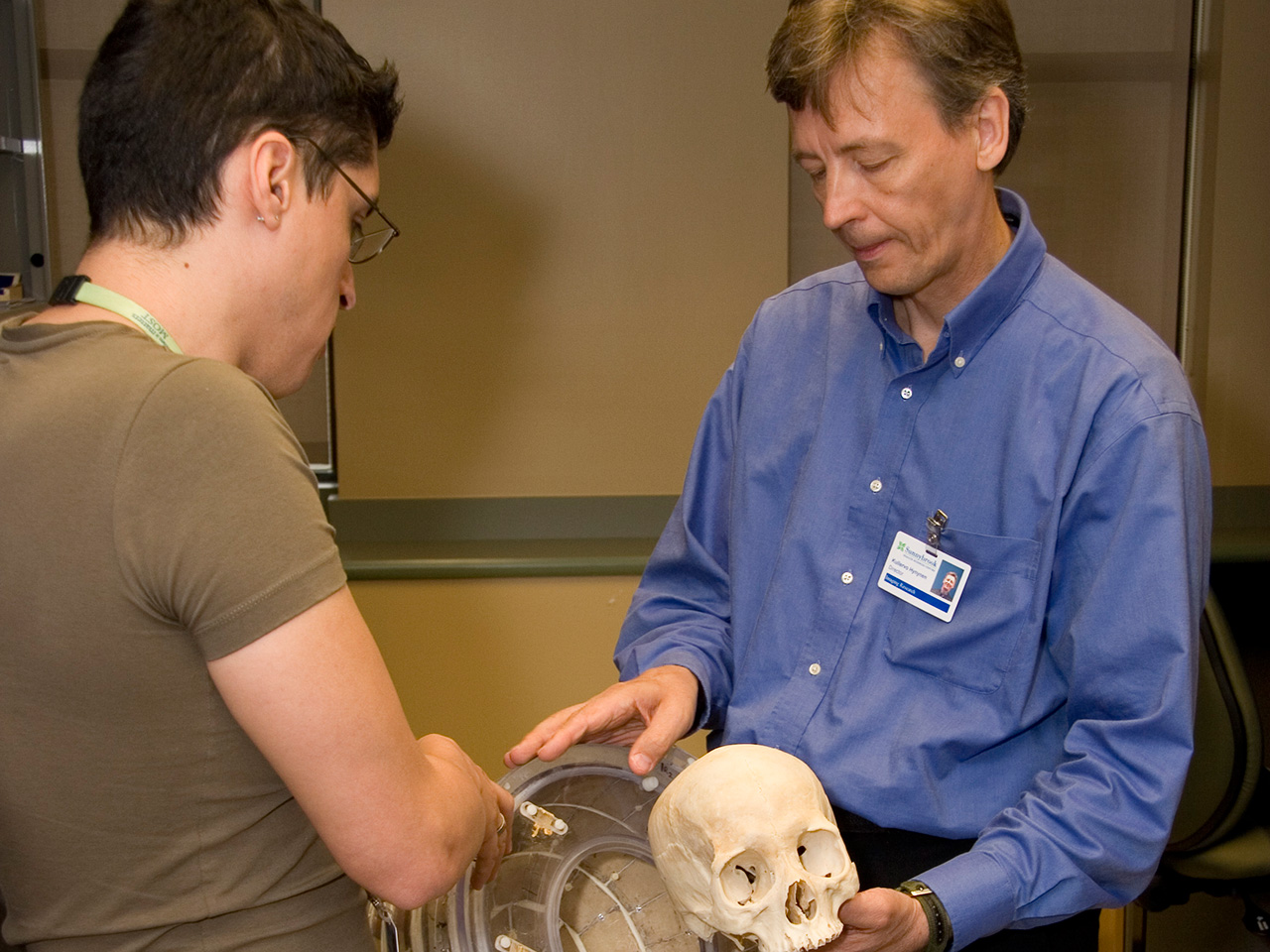Getting results
Dr. Kullervo Hynynen is in the lab, but not for the reason he'd like to be. It's a photo shoot, and the photographer is encouraging him to look natural among vertical racks of green circuit boards. Hynynen uses the time to talk science with postdoctoral fellow Dr. Laura Curiel and scientist Dr. Rajiv Chopra, who will collaborate with him and share a newly renovated 3,600 square foot lab on the seventh floor of Sunnybrook's C wing.
The lab is unique at Sunnybrook. Since arriving in January 2006, Hynynen has recruited 14 lab members, and expects to double that number in the next six months. By autumn 2007 there will be 35 students, postdocs, engineers, tissue culture assistants, animal technicians and research assistants—about the size of his previous lab at Harvard—engaged in 12 research projects.
Chopra, in his office down the hall, says, "The group gets so big because Kullervo focuses on a number of areas to get the work into the clinic." For focused ultrasound therapy of brain tumours, he explains, one team calculates algorithms on wave distortion and refocusing inside the brain. Another handles electronics driver development—how to get signals to sound transducers in the MRI unit. Yet another makes the transducers. Then there is a major effort in preclinical evaluation of prototype devices. "It's the whole spectrum of research," says Chopra.
While the range of activity in Hynynen's lab is unusual, his interaction with his staff is most striking. "One thing that sets Kullervo apart is communication," says Chopra. "He doesn't sit isolated from the students." Students face agonizing forks in the road during experiments, and Chopra admits that there's something to be learned from going down the wrong path, seeing it and coming back. But at the same time, he says with some understatement, "You don't want to make your career out of it. Kullervo really uses his experience to guide his students."
Curiel, recently arrived from France, agrees. "It's astonishing he finds time to speak with each person in the lab, often every day … to check progress and make suggestions." She believes this unusual for an established scientist, but is grateful that he does so. "It saves a lot of lost time," she says adamantly.
Hynynen's short commute from his new home close to Sunnybrook helps him to find time, as does a daunting schedule of dawn-until-dusk workdays. But Hynynen nonchalantly regards the hours and the complex range of his work as requisite for his ultimate goal—clinical implementation.
PDF / View full media release »





